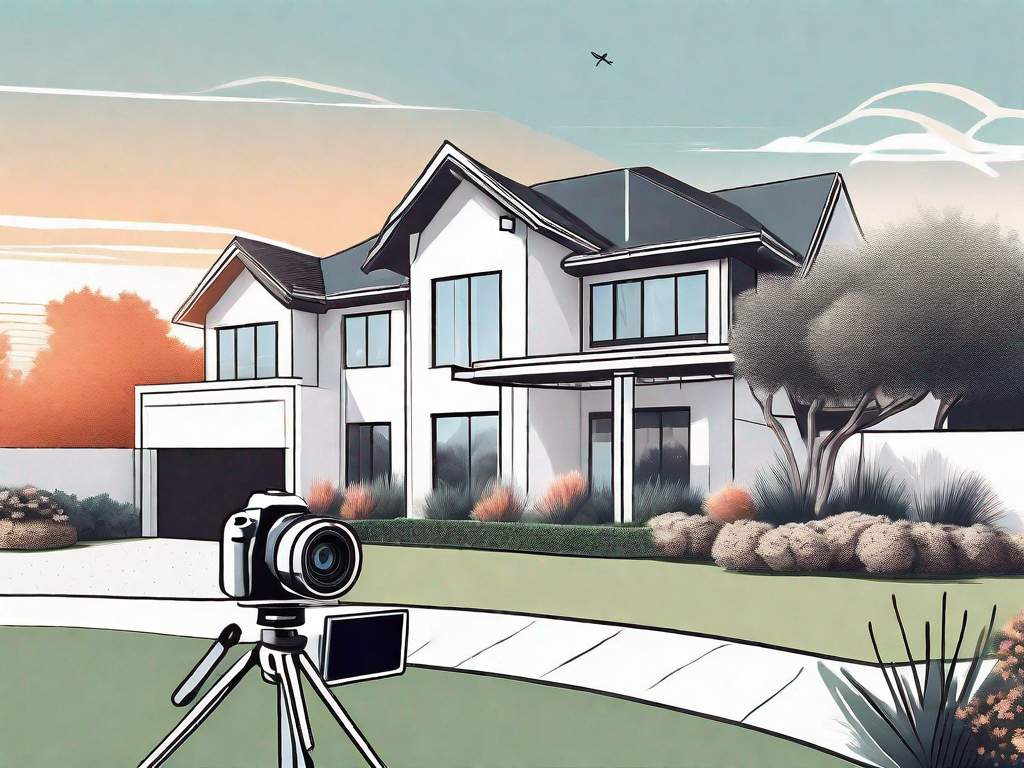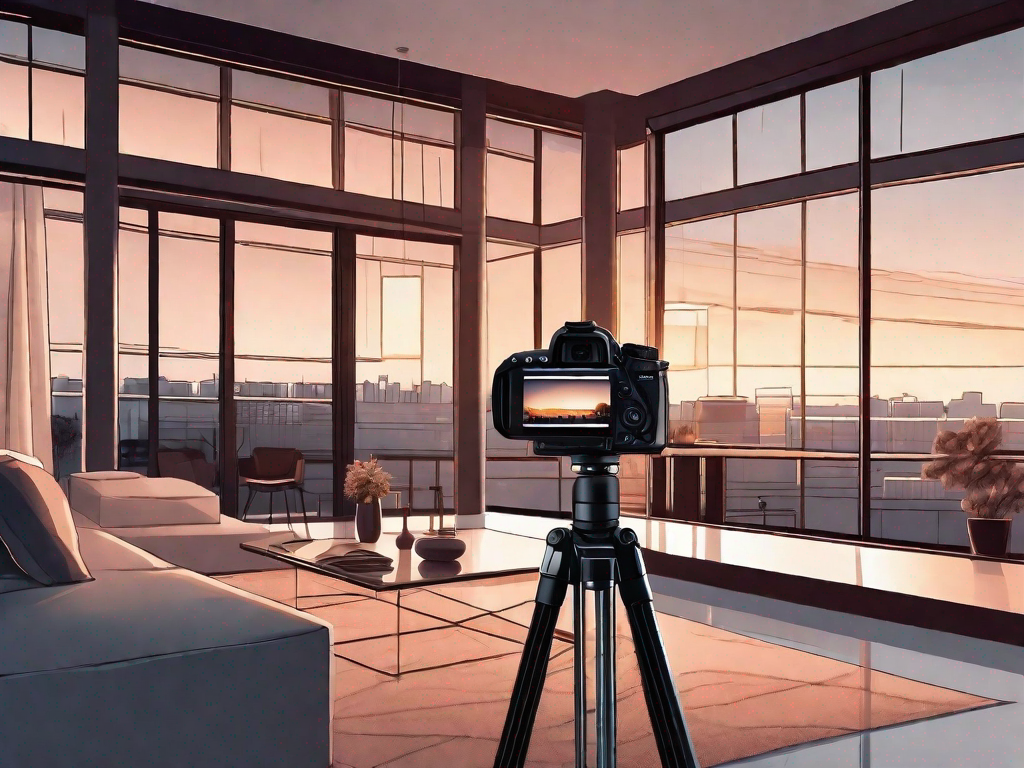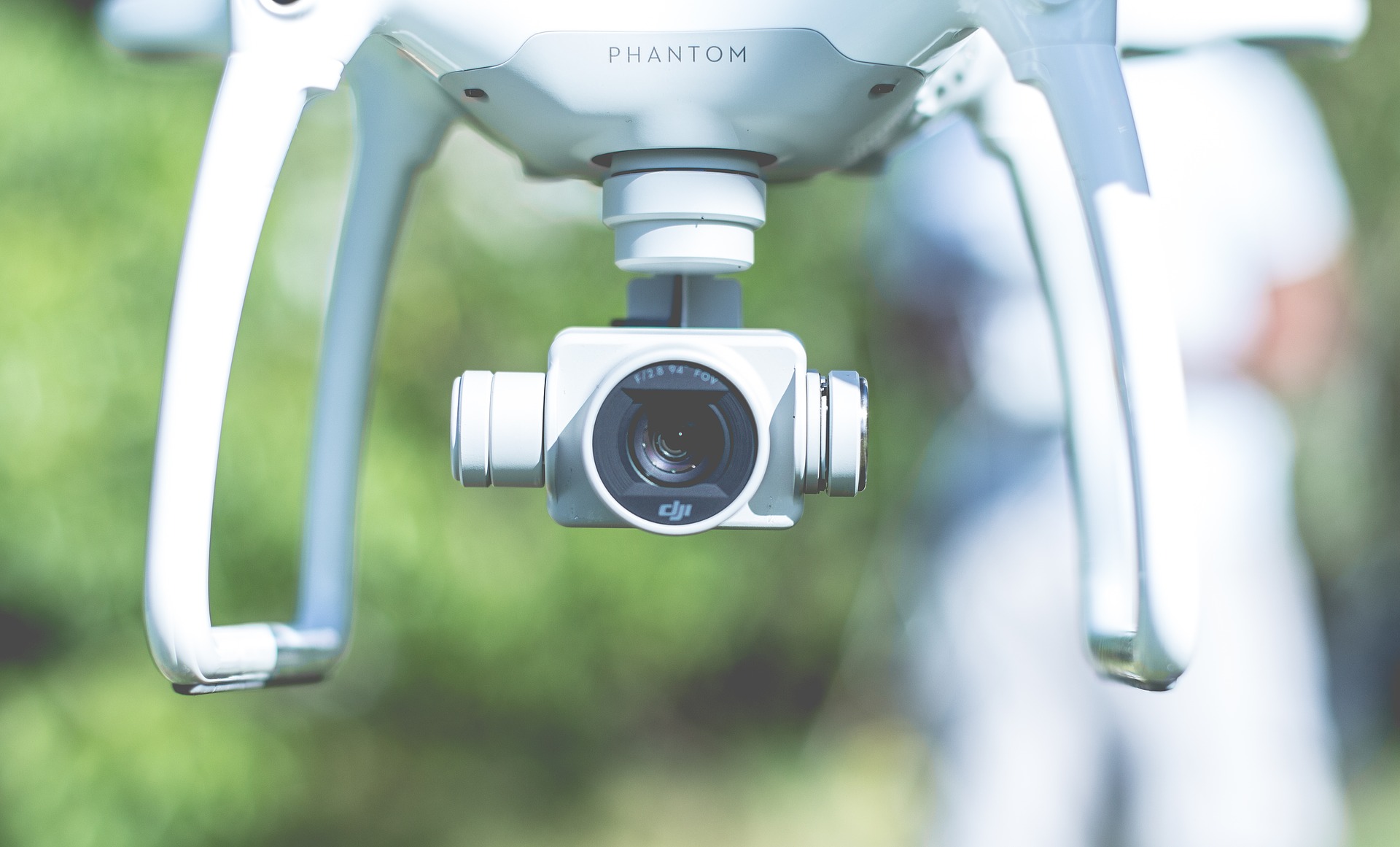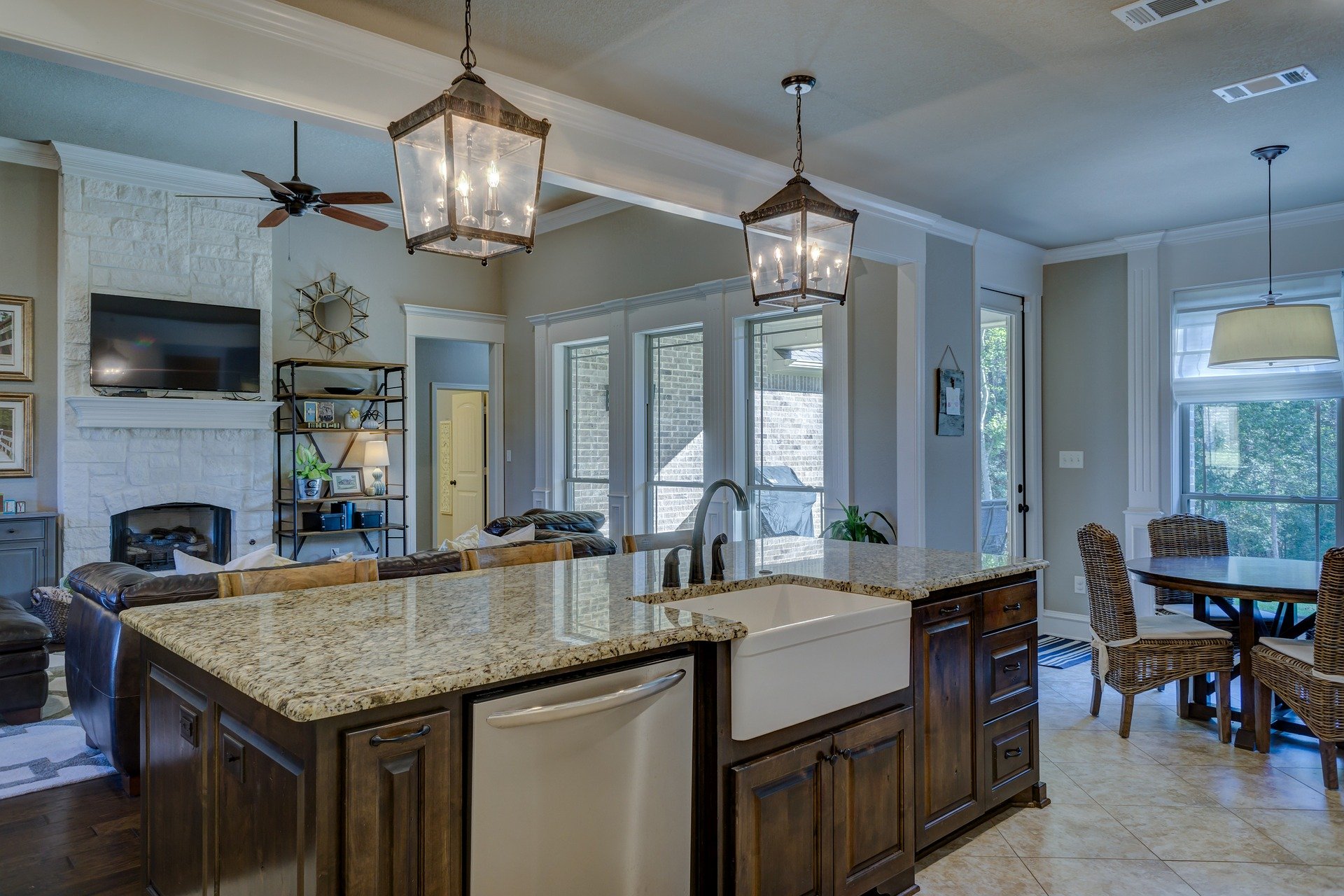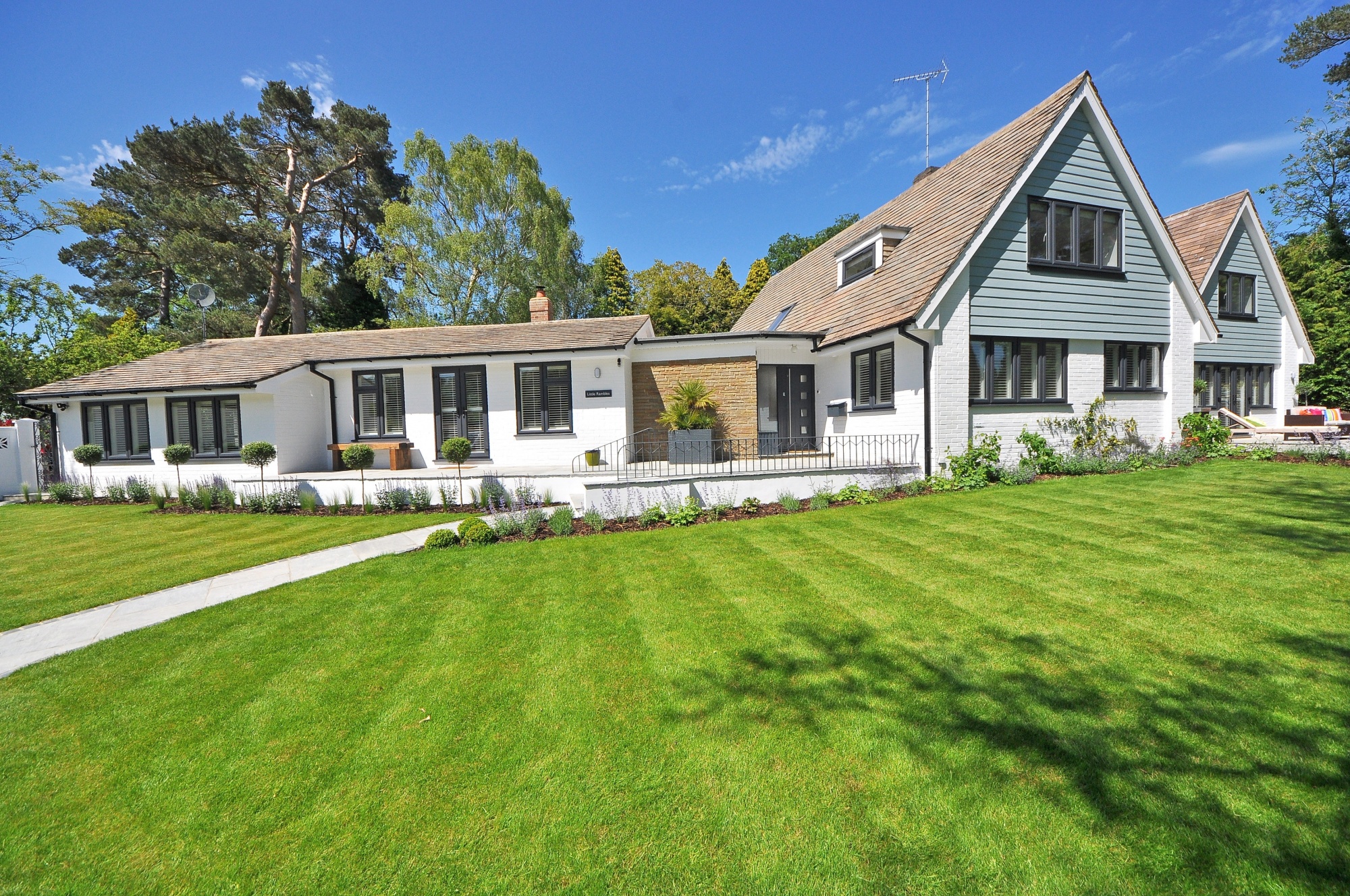In today’s competitive real estate market, it is crucial to make a strong first impression. One of the most effective ways to do this is through professional real estate photography. High-quality photographs can showcase your property in its best light and attract potential buyers or renters. In this comprehensive guide, we will explore the importance of professional real estate photography, how to identify your specific photography needs, where to find the right photographer, and what questions to ask during the hiring process.
Understanding the Importance of Professional Real Estate Photography
The Role of Photography in Real Estate Marketing

Photography plays a pivotal role in real estate marketing. It serves as the initial point of contact for potential buyers and provides them with a glimpse into the property’s key features and overall appeal. Studies have shown that listings accompanied by professional photographs receive significantly more views and generate higher interest.
When potential buyers are browsing through numerous listings online, the first thing that catches their attention is the visual representation of the property. Professional real estate photography has the power to make a lasting impression and create an emotional connection with the viewer. It allows them to imagine themselves living in the space and envision the lifestyle it offers.
High-quality photographs can effectively showcase the unique selling points of a property. Whether it’s the spacious open floor plan, the luxurious master suite, or the beautifully landscaped backyard, professional photographers have the expertise to capture these features in the best possible way. They understand how to utilize angles, lighting, and composition to create visually stunning images that evoke desire and intrigue.
Benefits of Hiring a Professional Photographer
While anyone can take photos with a smartphone nowadays, hiring a professional photographer brings numerous benefits. Professionals have the skills, knowledge, and specialized equipment necessary to capture your property’s unique selling points in the best possible way. They understand how to utilize angles, lighting, and composition to create visually stunning images that evoke emotional responses.
Moreover, professional photographers have an eye for detail and can artfully capture the essence of each room, highlighting its potential. They know how to stage the space to make it look inviting and appealing. Whether it’s the gleaming hardwood floors, the picturesque view from the balcony, or the cozy fireplace, these details can make all the difference in attracting potential buyers.
Another advantage of hiring a professional photographer is their ability to edit and enhance the images. They have the expertise to adjust the colors, remove distractions, and make the photos look polished and professional. These edited images can significantly elevate the overall presentation of the property and make it stand out among the competition.
Furthermore, professional photographers understand the importance of consistency in branding. They can ensure that the style and tone of the photographs align with your brand image and marketing strategy. This consistency helps to establish a strong and cohesive visual identity for your real estate business.
Lastly, hiring a professional photographer saves you time and allows you to focus on other aspects of your real estate business. They take care of all the photography-related tasks, from setting up the shots to editing the final images. This frees up your time and energy, allowing you to concentrate on client meetings, negotiations, and other essential activities.
Identifying Your Real Estate Photography Needs
Determining Your Property’s Photographic Requirements
Before embarking on the search for a professional real estate photographer, it is essential to identify your property’s specific photographic requirements. Consider the size of your property, the number of rooms, and any unique features or amenities. This information will help you determine the scope of work and guide your discussions with potential photographers.
When assessing the size of your property, take into account not only the square footage but also the layout. Is it a sprawling estate with multiple buildings and outdoor spaces, or a compact urban apartment with limited square footage? Understanding the scale of your property will help you gauge the amount of time and effort required to capture it effectively.
Furthermore, consider the number of rooms that you want to showcase. Are there multiple bedrooms, bathrooms, and living areas that need to be photographed? Each room may require different angles and lighting techniques to highlight its unique features and create an inviting atmosphere.
Additionally, think about any distinctive features or amenities that make your property stand out. Do you have a stunning view, a luxurious swimming pool, or a beautifully landscaped garden? These elements can significantly enhance the visual appeal of your property and should be highlighted in the photographs.
Setting Your Budget for Real Estate Photography
Real estate photography costs can vary depending on various factors, including the size of the property, the number of photos needed, and the experience of the photographer. It’s important to set a budget that aligns with your expectations and property value. Remember, investing in high-quality photography is an investment in your property’s marketability and can yield significant returns.
When determining your budget, consider the potential impact that professional photography can have on the sale or rental of your property. High-quality photos can attract more potential buyers or tenants, leading to a quicker and potentially more profitable transaction. Therefore, allocating a reasonable budget for real estate photography is a wise decision.
Keep in mind that experienced photographers may charge higher rates due to their expertise and reputation. However, their skills and knowledge can greatly contribute to capturing your property’s best features and creating visually stunning images that leave a lasting impression on potential buyers or tenants.
Furthermore, consider the number of photos you require. Do you need comprehensive coverage of every room and outdoor area, or are you looking for a more focused approach? Discussing your specific needs with photographers will help you determine the appropriate number of photos and ensure that they fit within your budget.
By carefully considering your property’s photographic requirements and setting a realistic budget, you can find a professional real estate photographer who can effectively capture the essence and appeal of your property. Remember, investing in high-quality photography is an investment in showcasing your property’s full potential and maximizing its marketability.
How to Find a Professional Real Estate Photographer
When it comes to showcasing a property, high-quality photographs can make all the difference. Whether you’re a real estate agent looking to market a listing or a property owner wanting to capture the essence of your home, finding a professional real estate photographer is essential. But how do you go about finding the right one? Let’s explore some tips and strategies to help you in your search.
Searching for Photographers in Your Area
One of the first steps in finding a professional real estate photographer is to look for local photographers who specialize in real estate photography. Start by utilizing online directories that list photographers in your area. These directories often allow you to filter your search based on location and specialty, making it easier to find photographers who are experienced in capturing the essence of properties.
In addition to online directories, you can also turn to search engines to find local real estate photographers. Simply type in relevant keywords like “real estate photographer Seattle” and browse through the search results. This method can be particularly helpful if you’re looking for photographers who have a strong online presence and are actively marketing their services.
Another valuable resource for finding professional real estate photographers is to ask for recommendations from real estate agents or other property owners in your area. Real estate agents often work closely with photographers and can provide insights into their experience and quality of work. Similarly, property owners who have recently hired a photographer may be able to share their experiences and recommend someone they were happy with.
Once you have a list of potential photographers, take the time to check out their websites and portfolios. This will give you a sense of their style and expertise. Look for photographers who have a diverse portfolio, showcasing different types of properties and capturing them in an appealing way. Pay attention to the composition, lighting, and overall aesthetic of their photographs to ensure it aligns with your vision.
Utilizing Online Platforms to Find Photographers
In addition to local directories and search engines, there are various online platforms dedicated to connecting photographers and clients. These platforms can be valuable resources for finding talented real estate photographers in your area.
Websites like Houzz, known for its focus on home design and improvement, often have sections dedicated to photography services. You can browse through the profiles of photographers, read reviews from previous clients, and even view their portfolios. This can give you a comprehensive understanding of a photographer’s skills and reputation.
Thumbtack is another popular online platform that connects clients with service providers, including photographers. By answering a few questions about your photography needs, Thumbtack matches you with professionals in your area. You can then review their profiles, read reviews, and request quotes, making it a convenient and efficient way to find a real estate photographer.
Don’t overlook the power of social media platforms such as Instagram. Many photographers use Instagram as a portfolio, showcasing their best work and providing a glimpse into their creative process. By searching for relevant hashtags like #realestatephotography or #propertyphotographer, you can discover talented photographers in your area. Take the time to explore their profiles, engage with their content, and reach out to inquire about their services.
Remember, when utilizing online platforms, it’s important to read reviews from previous clients. This will give you insights into a photographer’s professionalism, communication skills, and the overall satisfaction of their clients. Look for photographers who have consistently positive reviews and a track record of delivering high-quality work.
By combining the strategies of searching for photographers in your area and utilizing online platforms, you can increase your chances of finding a professional real estate photographer who meets your specific needs. Take the time to research and evaluate your options, as investing in a skilled photographer can greatly enhance the visual appeal of your property and attract potential buyers or renters.
Evaluating a Real Estate Photographer’s Portfolio
Assessing Quality of Work
When evaluating a photographer’s portfolio, pay attention to the quality of their work. Look for sharp, well-exposed images that showcase the property’s best features. Are the colors accurate, and do the photos have a natural, inviting feel? Taking note of these details will help you determine if the photographer can deliver the level of quality you desire.
Looking for Variety and Creativity in Shots
It’s important to find a photographer who can capture the unique essence of your property. Look for a variety of shots in their portfolio, showing different rooms, perspectives, and lighting conditions. A creative photographer with an eye for detail will produce engaging images that stand out from the competition.
The Hiring Process: Questions to Ask Potential Photographers
Inquiring About Experience and Specialization
During the hiring process, it’s crucial to ask potential photographers about their experience and specialization. Inquire about their background in real estate photography and how many similar projects they have completed. Their expertise in understanding the nuances of real estate photography can make a significant difference in the final outcome.
Ask if they have experience working with properties similar to yours. For example, if you have a luxury home or a commercial property, ensure the photographer has the necessary skills and equipment to capture these unique features.
Discussing Availability and Turnaround Time
Time is often of the essence when it comes to real estate marketing. Discuss the photographer’s availability and turnaround time for delivering the final images. You’ll want to ensure they can accommodate your schedule and provide the finished product promptly, allowing you to begin marketing your property without delay.
By understanding the importance of professional real estate photography, identifying your specific photography needs, finding the right photographer, and asking the right questions during the hiring process, you are well-equipped to make an informed decision. Remember, investing in high-quality photography can make all the difference in attracting potential buyers or renters and ultimately selling or renting your property at the best possible price.

